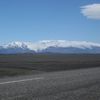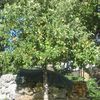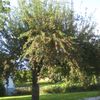Ísland vs Kuwait, umferðarhegðun
8.9.2007 | 14:32
Að vera á bíl veitir mörgum manninum frelsi (já konur eru líka menn). Ég hef keyrt bíl víðsvegar í evrópu og aldrei fundið fyrir ógnun í umferð eða fundist mikil umferð í miðbæjum borga þar sem ég rata ekki í vera til vandræða .. jú allir fóru eftir umferðarreglunum ;) Á íslandi hinsvegar er manni ógnað mörgum sinnum á dag á ferðinni í gegnum umferðina hér í borg. Þegar ég var að surfa á netinu fyrir stuttu þá komst ég yfir síðu með umferðarreglum í kuwait.. og viti menn.. þetta var eins og sniðið eftir íslenskum aðstæðum.. lesið sjálf og sannfærist. Krefst lágmarks ensku kunnáttu :)
Traffic rules of Kuwait
1. Right of way
Right of way belongs to the vehicle which has it’s bumper 5cm ahead of another, irrespective of whether approaching from the left or right.
2. The Kuwait scissors
When in 3 lanes of traffic, all traffic wishing to turn right should occupy the left hand lane and vice versa. One must then wait until the last possible moment before crossing the other two lanes at right angles to the traffic flow, to do so too early is to lose face.
3. Overtaking
There are four ways to get past the car in front; to the left, to the right, over the top and underneath, also known as undertaking.
4. The weave
Never hold a steady speed in one lane. You can gain as much as 20 meters over a distance of 10 kilometers by continuously swerving from one lane to another whilst invoking rules 1 and 10. The minimum speed for this maneuver is 150kph.
5. Right of way (buses)
Buses do not have right of way; they just take it. Bus horns are frighteningly louder than any others. There are some official boarding and alighting points but the buses will drop off and/or pick up passengers at any place, any time, in traffic, provided that the passenger is sufficiently fleet of foot and oblivious to the threat of traffic flowing around him.
6. Pedestrians
These may cross the road when, where, and however they wish. Be they old, young, agile or decrepit, they have the right to step into the traffic and dodge, dance or merely stolidly move across. However, motorists are encouraged to do their best to hit them, preferably at speed. (Even on the pavement) Motorist should note that most motorway bridges are 1000m apart and that pedestrians will cross at 500m intervals.
7. Traffic lights
There are nine possible combinations of traffic lights in use in Kuwait, they being; red, amber, green, red plus amber, red plus green, green plus amber, red plus green plus amber, flashing amber, and all off. Any selection of these can be found on any one set of traffic lights. The meanings of the various arrangements are not known, but if crossing when the lights are red (or any other combination) and you see a car crossing in front of you, make sure you hit it squarely in the side, if possible, at speed.
8. U-turns
These are used for changing direction and carriageway. If possible try not to pull out if a car is going past in the outside lane of the carriageway you want to pull into. If you are in a hurry, the somersault and roll method is a quicker way of achieving the same result, but avoid the lamp posts in the central reservation.
9. Parking
a) Short term: If you need to, just double or treble park, after all the traffic CAN get around you.
b) Long term: Park alongside a yellow and black curb. If you are lucky the police will fit the car with an anti-theft device or tow it to a secure car park. There is however a standard charge for these services.
10. Mirrors
These are not, contrary to popular belief, for looking for vehicles behind you, but are for grooming, adjusting gutrah’s & seeing where the parsley is stuck to your teeth.
Traffic rules of Kuwait
1. Right of way
Right of way belongs to the vehicle which has it’s bumper 5cm ahead of another, irrespective of whether approaching from the left or right.
2. The Kuwait scissors
When in 3 lanes of traffic, all traffic wishing to turn right should occupy the left hand lane and vice versa. One must then wait until the last possible moment before crossing the other two lanes at right angles to the traffic flow, to do so too early is to lose face.
3. Overtaking
There are four ways to get past the car in front; to the left, to the right, over the top and underneath, also known as undertaking.
4. The weave
Never hold a steady speed in one lane. You can gain as much as 20 meters over a distance of 10 kilometers by continuously swerving from one lane to another whilst invoking rules 1 and 10. The minimum speed for this maneuver is 150kph.
5. Right of way (buses)
Buses do not have right of way; they just take it. Bus horns are frighteningly louder than any others. There are some official boarding and alighting points but the buses will drop off and/or pick up passengers at any place, any time, in traffic, provided that the passenger is sufficiently fleet of foot and oblivious to the threat of traffic flowing around him.
6. Pedestrians
These may cross the road when, where, and however they wish. Be they old, young, agile or decrepit, they have the right to step into the traffic and dodge, dance or merely stolidly move across. However, motorists are encouraged to do their best to hit them, preferably at speed. (Even on the pavement) Motorist should note that most motorway bridges are 1000m apart and that pedestrians will cross at 500m intervals.
7. Traffic lights
There are nine possible combinations of traffic lights in use in Kuwait, they being; red, amber, green, red plus amber, red plus green, green plus amber, red plus green plus amber, flashing amber, and all off. Any selection of these can be found on any one set of traffic lights. The meanings of the various arrangements are not known, but if crossing when the lights are red (or any other combination) and you see a car crossing in front of you, make sure you hit it squarely in the side, if possible, at speed.
8. U-turns
These are used for changing direction and carriageway. If possible try not to pull out if a car is going past in the outside lane of the carriageway you want to pull into. If you are in a hurry, the somersault and roll method is a quicker way of achieving the same result, but avoid the lamp posts in the central reservation.
9. Parking
a) Short term: If you need to, just double or treble park, after all the traffic CAN get around you.
b) Long term: Park alongside a yellow and black curb. If you are lucky the police will fit the car with an anti-theft device or tow it to a secure car park. There is however a standard charge for these services.
10. Mirrors
These are not, contrary to popular belief, for looking for vehicles behind you, but are for grooming, adjusting gutrah’s & seeing where the parsley is stuck to your teeth.








Bæta við athugasemd [Innskráning]
Ekki er lengur hægt að skrifa athugasemdir við færsluna, þar sem tímamörk á athugasemdir eru liðin.